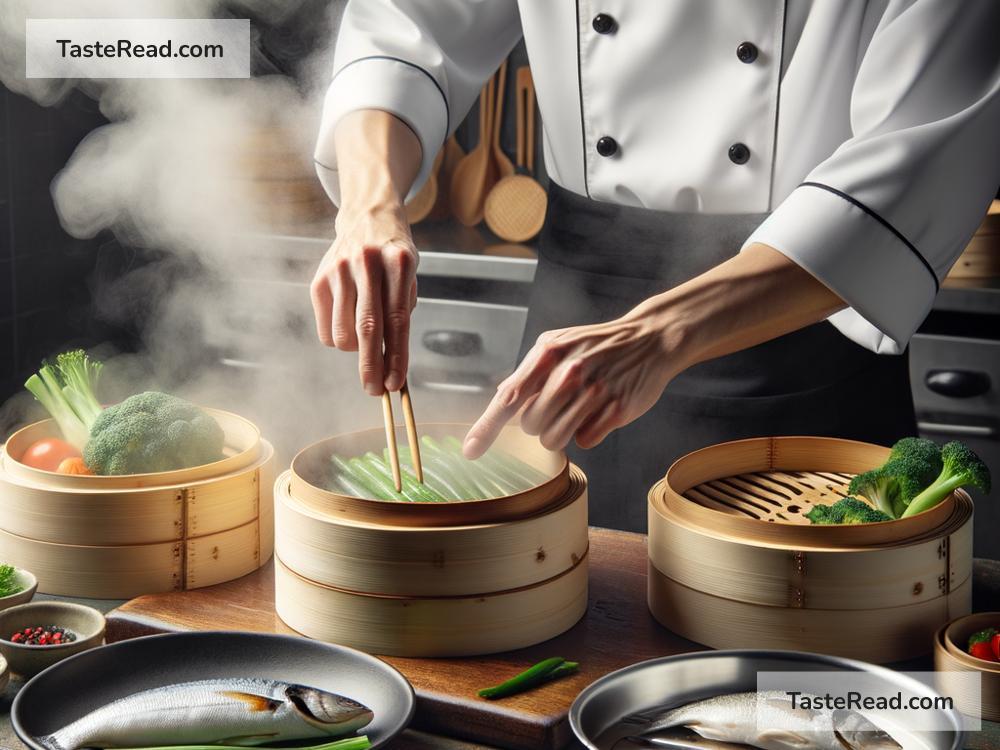The Science of Cooking with Steam: Techniques and Tips
Cooking is an art, but it’s also a science! One method that is often underrated, yet incredibly powerful, is cooking with steam. Whether you’re preparing vegetables, fish, dumplings, or even desserts, steaming is a healthy and versatile cooking technique that preserves flavor and nutrients while offering consistent results. In this blog, we’ll explore the science behind steaming, techniques to master it, and tips to level up your steaming game—all explained in simple English.
What is Steam Cooking?
Steam cooking is a method where food is heated by steam rather than direct heat from a stovetop, oven, or grill. Water is boiled to create steam. That steam surrounds the food, cooking it gently and evenly. Since food doesn’t touch boiling water directly, steaming prevents overcooking and ensures delicate flavors are retained.
Steaming can be done in various ways, including using a bamboo steamer, metal steaming baskets, electric steamers, or even improvised methods like a colander placed over a boiling pot. The key is trapping the steam so it efficiently cooks the food.
The Science Behind Steam Cooking
Steam cooking works due to heat transfer, where steam carries heat to the surface of food, cooking it from the outside in. Here are some science-backed reasons steaming works so well:
1. Uniform Heat
Steam’s temperature remains consistent at around 212°F (100°C) at sea level, unlike ovens or frying pans which can have uneven heat distribution. This ensures food cooks evenly—a great advantage when dealing with delicate ingredients like fish or tender vegetables.
2. Moist Cooking Environment
Unlike dry cooking methods like baking or roasting, steaming keeps food moist. The water vapor surrounds the food to maintain hydration, preventing it from drying out. This is why steamed fish and vegetables turn out succulent and tender.
3. Nutrient Preservation
Studies show that steaming preserves nutrients that might be lost in other methods like boiling. For instance, boiling can leach water-soluble vitamins like Vitamin C into the cooking liquid. Steaming keeps these nutrients intact by minimizing direct water contact.
4. No Added Fats
Steam cooking doesn’t require oil or butter, making it one of the healthiest cooking methods. If you’re aiming for light and clean dishes, steaming is a smart choice.
Techniques to Master Steam Cooking
1. Choose a Steaming Tool
You don’t need fancy gadgets to steam food—you can use whatever fits your needs. Bamboo steamers are traditional and perfect for dumplings, buns, or fish as they absorb excess moisture. Metal steam baskets or electric steamers are practical options and work well for everyday cooking.
2. Prep Your Ingredients
Cut food into uniform sizes to ensure everything cooks evenly. For example, if you’re steaming vegetables, slice them into similar shapes so they cook at the same speed.
3. Don’t Let Food Touch Water
The food should never sit directly in the boiling water. Place it above the water level in a steaming basket, tray, or plate, depending on your setup.
4. Add Flavor to the Steam
While steam itself doesn’t carry flavor well, you can infuse the food with subtle aromas by adding herbs, spices, garlic, or citrus to the water. For dumplings or buns, adding a tea leaf or bay leaf to the steaming water can boost flavor without direct contact.
5. Monitor Cooking Time
Different foods require different steaming times. Vegetables like broccoli and carrots take about 5-7 minutes, delicate fish might take 8-10 minutes, and dumplings can take 10-15 minutes depending on the size and filling. Over-steaming can lead to mushy textures and loss of vibrant colors, so keep an eye on your timer.
6. Use Lid Properly
Steaming requires trapping the steam. Always use a fitted lid to ensure minimal heat loss. If you’re using a bamboo steamer, place a damp cloth under the lid to keep the steam inside.
Tips to Perfect Steam Cooking
1. Don’t Overcrowd the Steaming Basket
Leave space between food items for proper air circulation. Overcrowding can block the steam and result in uneven cooking.
2. Check for Doneness
Use a fork or knife to test whether the food is cooked. Vegetables should be fork-tender, while fish should flake easily. For dumplings, the wrapper should look translucent and slightly shiny.
3. Experiment with Layers
Layering food can save time if you’re steaming multiple dishes. For instance, place fish on one tier of a bamboo steamer and vegetables on the other. Make sure to adjust steaming times because different foods cook at different rates.
4. Serve Immediately
Once steamed, food continues cooking from the residual heat. Serve it as soon as possible to enjoy the best texture, color, and flavor.
5. Steam Desserts
Steaming isn’t just for savory dishes! Try steaming desserts like sponge cakes or puddings for a fun twist. These treats come out moist and fluffy thanks to the water vapor.
Final Thoughts
Steaming is one of the simplest yet healthiest ways to cook food. Through the gentle heat of steam, you can prepare dishes that are flavorful, nutrient-rich, and tender. Whether you’re a beginner or a seasoned chef, mastering steam cooking opens up a world of possibilities in the kitchen.
So, next time you’re unsure about how to cook your ingredients, give steaming a try. With a little practice and creativity, you’ll be steaming up delicious and healthy meals in no time!
Don’t forget to share your favorite steamed recipes or tips in the comments below!
Happy steaming!


